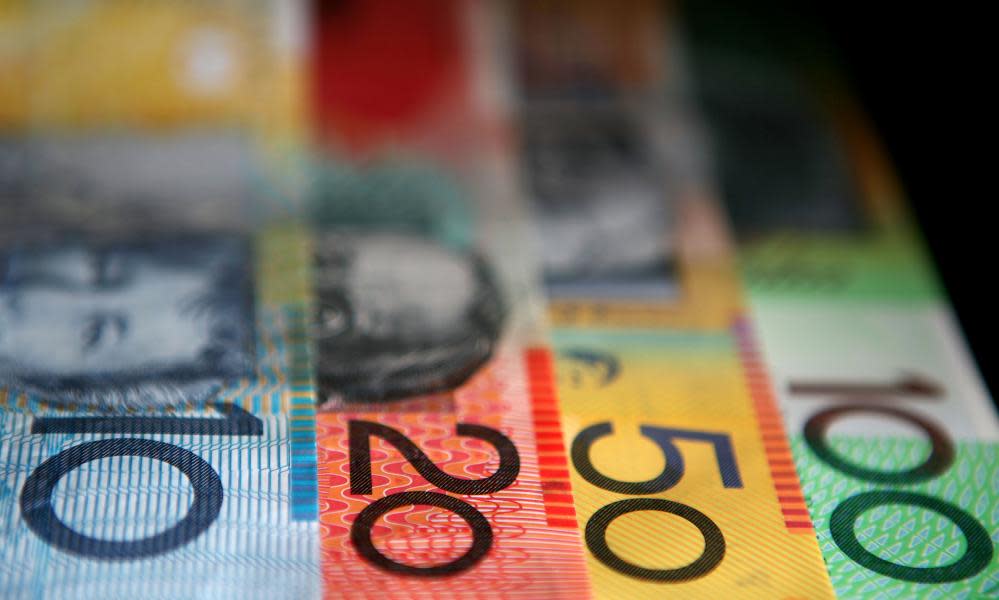Government's budget deficit for 2016-17 likely to be $38.3bn, report says

The Turnbull government’s budget deficit for the 2016-17 financial year is likely to be $38.3bn, nearly $2bn worse than projected five months ago, according to Deloitte Access Economics.
Deloitte’s twice-yearly Budget Monitor, released on Monday, shows stagnant wages and lacklustre jobs growth have weighed so heavily on personal income tax collections in Australia that they will trim $1.7bn from official revenue forecasts in 2016-17 and a further $600m in 2017-18.
But the report says last year’s surging commodity prices, and the Reserve Bank’s record-low interest rates, will help the government’s 2017-18 budget record a deficit $1.2bn smaller than projected five months ago, at $27.5bn.
That is despite total spending in 2016-17 being $1.2bn higher than projected in December, and $840m higher in 2017-18, thanks to policy decisions by government.
The treasurer, Scott Morrison, will release his budget on 9 May.
Last week he tried to temper expectations of a significant housing reform package in the budget, saying tougher foreign investment rules were already taking heat out of the market.
But he flagged changes to the way in which the budget would report government debt, saying he wanted the budget to distinguish between debt incurred to fund infrastructure and debt incurred to fund government programs.
He also said he wanted to distinguish between “good and bad debt”, and the budget would be showing the level of government debt across portfolios.
Chris Richardson, a director of Deloitte Access Economics, said despite attempts by the Coalition government to reduce spending, it had not been successful.
“The maths are inexorable, if spending won’t go much smaller than 26% of national income, then taxes need to lift from today’s 23.5%,” he said in the Budget Monitor.
“We’ve been adding 0.15% a year of national income to our spending habit for over a quarter of a century. In today’s dollars, that’s $2.5bn extra each and every year for taxpayers to fund. But taxpayers don’t know that yet, as we’ve put the last decade of cost hikes on the credit card.”
In November, Morrison admitted that the federal budget may not return to balance by 2020-21 as planned.
Deloitte’s Budget Monitor projects the commonwealth budget deficit, despite being $1.2bn smaller than expected in 2017-18, will be $1.2bn and $4.3bn larger than expected in 2018-19 and 2019-20 as commodity prices fall again and government spending remains elevated.
It projects the deficit will be $14.3bn in 2019-20, making the likelihood of the budget returning to balance by 2020-21 hard to achieve.

 Yahoo News
Yahoo News 
